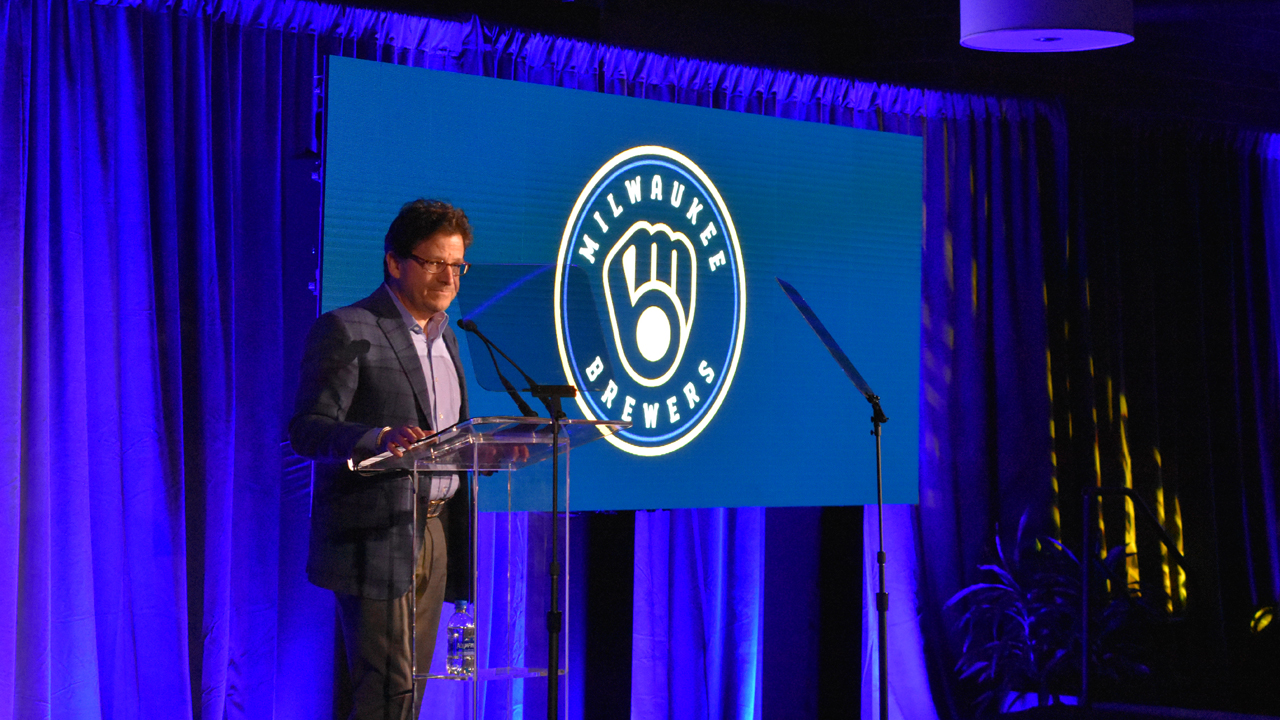Milwaukee Brewers owner Mark Attanasio remains hopeful that Major League Baseball can return this summer, in the wake of the COVID-19 crisis, but a game plan for keeping players and fans safe and healthy must be determined sooner rather than later.
During a webinar hosted by the Greater Milwaukee Committee on Tuesday, Attanasio said he’s hoping to resume the team’s spring training at Miller Park and begin the regular season in early July, likely without fans.
“I think it will be a real boost for everyone, but in order to do that, we have to get through all these medical protocols, get the doctors, get the commissioner of health, the mayor, the governor and everyone to feel safe,” he said, noting the effort requires close collaboration with local officials and business leaders.
The 2020 Major League Baseball’s regular season had been set to open in late March, but was put on hold due to the coronavirus pandemic. MLB is currently in talks with the players union to restart the season in July, proposing a shortened 81-game schedule, expanded roster and a universal designated hitter.
Attanasio said MLB has outlined a number of health and safety protocols in a 68-page guide that reflects the comments and concerns of players, teams and medical professionals.
One of the key proponents of getting players back on the field is what David Stearns, president of baseball operations and general manager of the Brewers, called an “extraordinarily robust testing apparatus.”
It requires all major league players and everyone associated with them to undergo coronavirus testing at least multiple times a week.
“Many people will be tested almost daily,” said Stearns, who also spoke during Tuesday’s webinar.
In addition, standard social distancing and hygiene practices would be enforced both in the clubhouse, which would be reconfigured to create additional space for players, and in the dugout, where Brewers manager Craig Counsell would have an assigned seat and players couldn’t stand too close.
The same goes for player-coach interactions on the field, said Stearns. Players practicing or gathering in groups would be encouraged to spend time outdoors to further reduce any risk of exposure.
Stringent PPE (personal protective equipment) guidelines require anyone in the clubhouse coming into contact with others to be fully equipped with proper PPE. Stearns said the organization believes it’s able to meet that benchmark.
“All clubs are now providing very significant feedback in order to make it a safe environment for players and an environment in which their normal work can be accomplished because, after all, we do need to get world class athletes ready to compete at major league caliber every single night,” he said.
From a competition standpoint, teams that are able to keep their players healthy when the season restarts would have an advantage over teams that have a COVID-19 outbreak, said Attanasio.
As part of ongoing negotiations on the logistics of restarting the season safely, MLB and the players association must also reach an agreement on compensation as staging baseball games without fans severely limits revenue across the league.
“League wide, 40% of the revenues are live gate related– tickets, concessions, parking, etc., so if we play without fans, that 40% is off the table,” said Attanasio. “In Milwaukee, because of our enormous fan support, it’s actually a larger percentage.”
With total revenue already expected to be cut in half as a result of the shortened season, compensating players at their full rate would take 90% of the league’s total revenues this year.
And even then, players would only make a fraction of what they originally agreed to in their contract, said Attanasio.
“Owners are in a position of wanting to do the right thing, but having to bear the cost of staging every game without revenue to support it, so we’re hoping to work collaboratively with the players association to come up with a solution for thatm somewhat of a forward-looking solution because we have to do that quickly in order to put the apparatus into place to get back on to the field in early July,” he said.
Touting the “healing role” baseball has played during other difficult times in America’s history, Attanasio said the MLB now has the opportunity to be the team first sport to come back from the ongoing COVID-19 shutdown.
The National Hockey League on Tuesday announced a phased-in reboot of its 2019-2020 season, including a modified version of its annual Stanley Cup Playoffs starting in late summer.
Twenty-four of the league’s 31 teams will participate in the competition, taking place in two “hub” cities, where each conference will enjoy secure hotels, an arena, practice facilities and in-market transportation.
Teams are expected to return to their home facilities in early June for small-group training, phase two of the plan. Phase three will allow formal training to begin no earlier than the first half of July. A start date for the modified competitive format has yet to be determined.
The NHL’s season was 85% complete when the pandemic halted operations in March. The 189 remaining regular season games will not be played.


